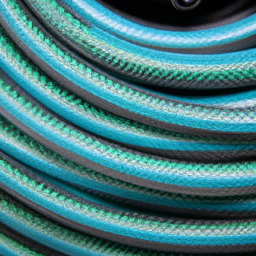Garden Hose What Thread
Table of Contents []
- What Thread Is A Garden Hose
- Types of Garden Hose Threads
- Materials Used in Garden Hose Threads
- Sizing of Garden Hose Threads
- Connecting Garden Hose Threads
- Inspecting and Maintenance of Garden Hose Threads
- Closing Remarks
What Thread Is A Garden Hose
What Thread Is A Garden Hose?
Types of Garden Hose Threads
Garden hose threads come in two categories - male and female - and within those categories, there are several types. The most common threads for a garden hose are the National Pipe Threads (NPT) and the National Standard Threads (NST). These two thread types are the most common and as such, they can be found on most residential garden hoses.
National Pipe Threads (NPT)
The National Pipe Thread (NPT) is the most common thread type for garden hoses. It is suited for both low and high-pressure applications and operates with a tapered thread form. It is a self-sealing thread and does not require any additional sealing materials to create a tight seal. NPT threads are not interchangeable with NST threads.
National Standard Thread (NST)
The National Standard Thread (NST) is a straight thread, meaning that the top and bottom of the thread are both flat with no taper. This makes it an ideal thread form for low-pressure applications, whereas the taper of the NPT is better suited for higher-pressure applications. NST threads are not interchangeable with NPT threads.
Materials Used in Garden Hose Threads
Garden hose threads are commonly made from brass or stainless steel. The choice of material is dependent on the application and environment. Brass is a popular material for garden hose threads due to its relatively low cost and ability to resist corrosion. However, it does have the drawback of being slightly prone to cracking or breaking. Stainless steel, on the other hand, is more expensive than brass but is more durable and corrosion-resistant.
Sizing of Garden Hose Threads
The size or diameter of garden hose threads is measured in terms of thread size. Common thread sizes for garden hoses include 1/2 inch, 3/4 inch, and 1 inch. The diameter of the threads is measured from the outside of one thread, to the outside of the corresponding opposite thread.
Connecting Garden Hose Threads
Garden hose threads can be connected by hand or with the use of a wrench or specialized crimping tool. Hand-tightening of the connection is generally sufficient in low-pressure applications, such as a garden hose with a sprayer nozzle attachment. However, in cases where the connection must be more secure, a wrench or crimping tool should be used to ensure a tight seal.
Inspecting and Maintenance of Garden Hose Threads
Inspecting and maintaining garden hose threads should be a regular part of any gardening routine. Inspections should include visual inspection to check for any damaged or worn out threads, especially near the connection joints. If any damage is noticed, the threads should be replaced or repaired immediately. Maintenance should include regular cleaning to prevent the build-up of dirt and debris which can weaken the strength of the thread.
Closing Remarks
Garden hoses are necessary tools for many gardening and landscape maintenance tasks, and the threads of the garden hoses are critical to ensuring a secure connection between the hose and its attachments. Understanding the types, materials, and sizes of garden hose threads, as well as proper connecting and inspection and maintenance procedures are essential to ensuring a stable and secure connection.

Previous Page
Next Page
